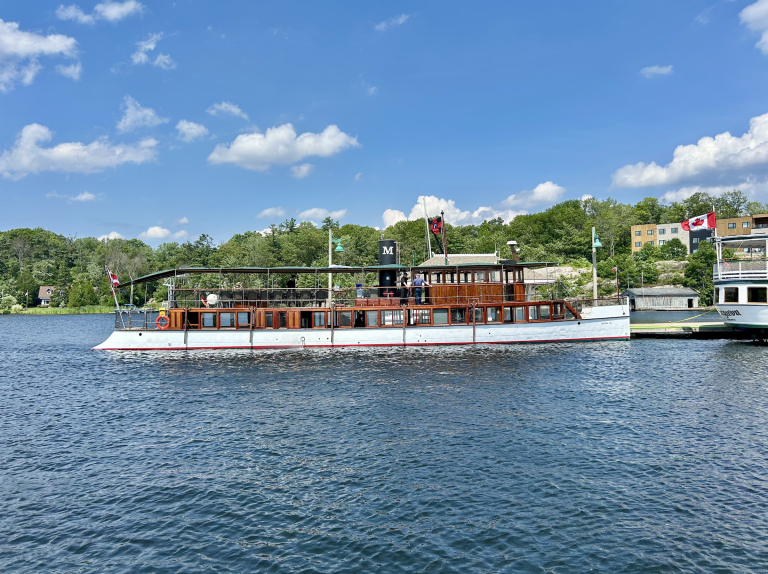Floating docks provide a practical and enjoyable way to access the water, ideal for boating, paddleboarding, or relaxing lakeside. Unlike traditional docks, these buoyant platforms sit on the water’s surface without the need for structural legs, making them both versatile and easy to install.
If you’re considering adding a floating dock to your waterfront, you’ll face a key decision: build it yourself or choose a ready-to-assemble kit. DIY builds can be rewarding but require tools, materials, and time. Dock kits, on the other hand, offer convenience and professional-grade quality, with a faster setup.
This guide breaks down how to build a floating dock and why many opt for kits to simplify the process.
Key Takeaways:
- Floating docks offer flexible and straightforward access to the water.
- DIY builds offer customization but demand more time and effort.
- Dock kits offer quick installation and reliable performance.
Items to Consider Before Building a Floating Dock

Water Type
Think about the type of water where you will place your dock. The depth and salinity of the water can affect how well your dock lasts.
Deeper water is usually better for floating docks. If the water levels change a lot, your dock can be less stable. If your water is salty, you need materials that can resist corrosion.
Location and Tides
Where you put your dock matters a lot. Strong tides, high winds, or other extreme weather can impact how well your dock holds up. Obstructions in the water can also pose a problem.
Tides can change water levels, which, in turn, increases stress on your dock.
Dock Usage
Think about how you’ll use the dock. Will it be for fishing, boat access, swimming, or commercial activities?
Your plans will dictate the size, shape, and layout of your dock. For example, if you have many friends and family hanging out, you’ll need a bigger space. If it’s mainly for boarding watercraft, you may need more slip-resistant materials.
Materials
You need to make wise choices when it comes to materials. Dock materials include platform materials, floatation devices, and hardware.
These materials should resist UV radiation, water damage, and other wear and tear. Picking the right materials will keep you safe and help your dock last longer. Look for low-maintenance and durable options.
Maintenance
Think ahead about how you will maintain your dock. You want it to be easy to care for in the long run.
Some materials are better at resisting corrosion and rough conditions. Harsh weather and UV radiation can speed up deterioration.
The less maintenance your dock needs, the more money and time you save down the road.
Recommended Materials and Tools
- Lumber: Opt for treated lumber to resist water damage.
- Decking Boards: Choose materials like composite or aluminum for durability.
- Floatation Devices: Foam floats are common, but PVC pipes can work, too.
- Hardware: Use galvanized fasteners and dock cleats to prevent rust.
- Anchors and Piles: These are used to secure the dock in place.
Tools
- Saw: For cutting lumber and decking boards.
- Screwdriver & Drill: Essential for assembling the frame and attaching hardware.
- Tape Measure: Precision is key for a stable structure.
- Saw Horses: Useful for holding materials while you cut.
Key Safety Tips
- Life Jacket: Always wear one when working on or near water.
- Stability Checks: Regularly check that all float supports are secure.
- Tighten All Fasteners: Ensure that all nuts, bolts, and screws are tight.
Planning and Preparation
- Dock Plans: Draw out detailed plans before starting.
- Materials List: Create a complete list of materials to avoid any last-minute runs to the store.
Quick Tips for a Successful Build
- Lay Out Materials: Have all your materials organized before you start building.
- Choose the Right Angle: Make sure the angles you cut lumber are accurate for stability.
- Double-Check Measurements: Measure twice and cut once.
How to Build a Floating Dock

1. Building Preparation
Before you start building, it’s crucial to plan your project carefully. Here are a few things to consider to make your dock-building process smoother:
- Purpose of the Dock: Think about what you’ll use your dock for. Will it be for swimming, fishing, or docking a boat? Knowing this helps you decide on the layout and specific features.
- Permits and Regulations: Check with local authorities to ensure you have all necessary permits. Different areas have different rules regarding dock construction.
- Choosing Materials: Select materials that can withstand water and weather. Pressure-treated wood and aluminum are excellent options. Ensure that your hardware is marine-grade to avoid corrosion.
2. Dock Platform Assembly
The platform is the foundation of your floating dock. Follow these steps to assemble it:
Measure and Mark:
- Mark out the areas using measuring tape and a pencil. Account for water depth and potential hazards.
Build the Frame:
- Use pressure-treated lumber to construct the frame.
- Secure the corners with marine-grade braces.
Install the Decking:
- Lay the decking boards evenly for water drainage.
- Secure the boards with galvanized or marine-grade screws or bolts.
Add Bracing and Cross Members:
- Ensure the dock has bracing and cross members underneath.
- This setup prevents the dock from sagging and distributes weight evenly.
3. Create a Floatation Component
The floatation component is what keeps your dock buoyant:
Choose Dock Floats: Select floats that can handle the dock’s weight, including people and any equipment.
Position the Floats: Evenly space them under the dock platform to ensure they stay balanced and buoyant.
Attach the Floats:
- Use marine-grade stainless steel or galvanized hardware to secure the floats.
- Apply a marine-grade sealant to protect them from water damage.
4. Add Accessories
Enhance your dock with useful accessories:
Cleats and Bumpers:
- Cleats are useful for securing boats, while bumpers protect the dock from impacts.
- Secure them with marine-grade hardware.
Ladders and Stairs:
- Ladders make it easier to get in and out of the water.
- Stairs provide easier access to and from the dock. Attach them securely to ensure safety.
Lighting:
- Install lighting to make your dock safer at night. A certified electrician can help set up any electrical outlets you need.
Lifts:
- Boat lifts and kayak launches make storing and using your watercraft more convenient.
- They securely hold your vessels and simplify the loading and unloading process.
Seats and Benches:
- Add seating options if you plan to use your dock for recreation.
- Choose materials that can withstand exposure to water and weather.
5. Anchor the Dock
Securing your dock is the final step:
Choose Anchors: Options include concrete blocks, augers, or post anchors, depending on your water conditions.
Install Anchors: Attach the anchors securely to the dock using marine-grade hardware. Ensure they are firmly in place to prevent movement.
Attach Ropes or Chains: Connect the dock to the anchors using marine-grade ropes or chains. Adjust the length based on water levels and conditions.
Check Stability: Once everything is in place, ensure the dock is stable and secure. Adjust the anchoring system as needed.
Perks of a Floating Dock Kit

Top-Notch Guarantee
Floating dock kits from professional outlets like EZ Dock come with impressive warranties. Having a solid guarantee means that the materials are of high quality and safe.
If any part has an issue, the manufacturer can handle repairs or replacements covered by the warranty. This kind of protection helps secure your investment and enhances your dock experience.
Simple to Build
When you get a dock kit, all necessary parts are included in one package. EZ Dock’s kits are user-friendly and straightforward to put together.
Their innovative coupling system keeps the sections firm and resilient against water and weather.
Additionally, these kits come with detailed guides and all the needed hardware, simplifying the construction process. All components are pre-cut and ready to be assembled.
With an easy-to-follow kit and clear instructions, anyone can build their floating dock with no prior experience needed.
Less Upkeep
EZ Dock floating docks are crafted from top-notch polyethylene, which doesn’t rot, split, or need painting. They resist fading from the sun, water damage, and corrosion.
Featuring slip-resistant surfaces and excellent durability, you can spend less time on maintenance and more time enjoying the water. Light cleaning with soap, water, and an occasional pressure wash is all you need to keep your dock looking great.
Superior Materials
Choosing a floating dock kit from EZ Dock means getting higher-quality materials.
Components made from recycled rubber and polyurethane ensure that the dock is built to last. These kits are meticulously crafted to endure water and weather wear.
You’re likely to get more out of your dock with materials from well-known dock companies than with basic DIY supplies.
Highly Adaptable
EZ Dock floating docks offer more adaptability than standard homemade docks. Once installed, these docks are easy to customize, letting you change configurations and add accessories to match your needs.
Whether it’s adding more sections, kayak launches, boat lifts, or accessories like ladders and benches, the kit’s modular design makes it simple to expand and adjust your setup.
To show this adaptability, here’s a quick list of accessories you can add:
- Kayak and paddleboard racks
- Dock floats and dock float drums
- Dock bumpers and bumpers for protection
- Paddleboard racks
- Various dock accessories
This flexibility ensures that your dock remains useful for different activities and watercraft.
Common Questions About Building Floating Docks
What materials do you need for a DIY floating dock?
Building a floating dock usually requires three main materials:
- Floats: These are essential to keep the dock above water. You can use barrels, foam blocks, or specific dock floats.
- Pressure-treated wood: This type of wood is good for making the frame because it resists moisture and decay.
- Decking boards: These boards make up the surface on which you will walk. Choose strong and durable decking.
How do you construct a floating dock using barrels?
Here’s a simple way to build a floating dock with barrels:
- Get your materials: You will need plastic barrels, a wooden frame, and decking boards.
- Build the frame: Construct a wooden frame that fits around the barrels.
- Attach the barrels: Secure the barrels to the frame. They will act as the floating base.
- Add the decking: Place the decking boards on top of the frame to create a walking surface.
What is the typical cost to build a floating dock yourself?
The cost can vary, but here’s a general idea:
- Floats or barrels: $50 – $200 each, depending on size and type.
- Pressure-treated wood: Around $10 per board.
- Decking boards: $15 per board.
- Additional hardware: About $100 for nails, screws, and other fasteners.
- Total: In total, you can expect to spend between $500 – $2000, depending on the size and materials used.
What are some creative floating dock designs and ideas?
Floating docks can be more than just a flat surface. Here are a few creative ideas:
- Multi-level docks: Add different levels to your dock for more functional space.
- L-shaped docks: Great for maximizing space and creating different activity zones.
- Swim platforms: Include a space dedicated to easy swimming access.
- Built-in seating: Add benches or chairs for comfortable lounging.
How can you make a floating dock stable in different water conditions?
To ensure your dock is stable, follow these steps:
- Anchor it well: Use solid anchors that can withstand varying water levels and waves.
- Distribute weight evenly: Balance the weight on the dock to prevent tilting.
- Check flex points: Reinforce areas that may bend or twist with added supports.
- Use durable materials: Higher quality materials hold up better against the elements.
What should you consider when building a floating dock for a pond?
Building a floating dock for a pond has some specific considerations:
- Size of the pond: Make sure the dock isn’t too large for the pond.
- Depth of the water: Ensure the floats are suitable for the pond’s depth.
- Water flow: Consider how water flows into and out of the pond.
- Environmental impact: Avoid disturbing wildlife and plants around the pond.







